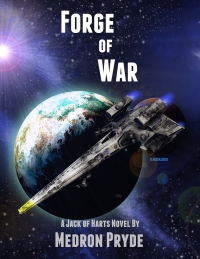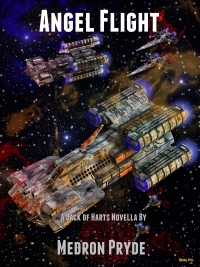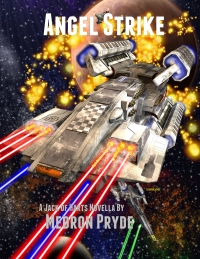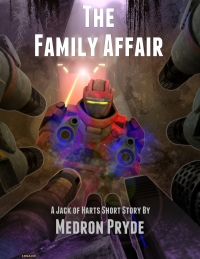Book of Civilizations – Australia
Hello, my name is Charles. The Australian Federation is a unique nation in the modern worlds. They are the only nation that comprises an entire continent, the only nation in the Western Alliance having a direct border with the Chinese, and one of the few nations with full membership in both the Western Alliance and the British Commonwealth. They are also the youngest great nation of the modern worlds, while part of one of the oldest. They are…certainly unique.
Book of Civilizations
Australia
The history of Australia as most people know it began with British Colonization in 1788. Her actual history starts many thousands of years ago, when Australia was the center of a vast maritime empire. The people of Australia traded with peoples from Africa and the Mediterranean Sea to the west coast of the Americas. They exchanged colonies with the Americas and the Middle East, and were known throughout the Pacific world as the most powerful realm in the region. They built grand pyramids and stellar observatories that are still used to this day, with modern enhancements of course. The histories of China, America, the islands of the Pacific, and even Africa knew the civilization that reached out from Australia to command the Pacific.
The Egyptians came to Australia four millennia ago, and their hieroglyphs are still visible in the ruins of colonies they built. And the locals use many Egyptian words to this day. The Phoenicians came to trade three millennia ago, and we still find remnants of their civilization scattered around Australia. Australians placed a colony in the Andes Mountains that still survives, and place names in the area of Lake Titicaca remember the name they once used. The Uru.
Other than that colony, the Uru are gone now, and we don’t know why. We can see their ruins throughout the Pacific we still have control of, from Australia to Hawaii to Easter Island and beyond. There are roads that lead into the ocean, cities beneath the waters off the coasts, temples on the hills, and giant statues of men looking out on the water. They were a powerful civilization in their time. And as has happened to many cultures, their time passed. By the time China sailed to Australia to find them in the sixth century BC, they discovered boomerang-wielding pygmies, kangaroos, and ruins.
The Chinese went on to dominate the Pacific and Indian Oceans for the next two thousand years, studying the stars of the southern sky from Australia, meeting the Ethiopians in Africa, exploring the west coast of America, and traveling to many of the islands in between. This all ended in 1500 AD, when the Yongle Emperor decried that there was nothing worth seeing outside of China, and that the Chinese would come home to their civilized lands.
In this vacuum of power, the Europeans soon arrived and discovered the great land of the ocean. A Portuguese marine circumnavigated it in 1522, the Spanish ships Santa Isabel and Santa Barbara found their way to it in 1595, and later the Dutch traveled there in 1606. In 1770, the English Captain James Cook followed a map to Australia and claimed it for the British Empire.
And in 1788, the British founded a prison colony at New South Wales on the east coast of Australia, finally bringing the continent out of thousands of years of effective isolation. At the time, approximately 250 Aboriginal nations commanded Australia, totaling as many as one million possible people. As happened whenever the Europeans arrived, chickenpox, smallpox, influenza, and the measles spread throughout the continent, ravaging the local populations as it went. By 1900, at least 90% of the population was dead, leaving behind less than one hundred thousand Aboriginals.
While the Aboriginal population died to diseases and warfare, the British population increased and expanded across the continent, much like in the Americas. And much like in America, there has been vigorous debate over whether the British purposefully slaughtered the Aboriginal population or if they were simply the victim of disease and the random violence that has always happened when cultures clashed. Some Aboriginal representatives still charge the Australian government with stealing generations of children from their parents, ordering that they stop following their religious customs, and numerous other actions designed to destroy the Aboriginal people. Not surprisingly, Australian loyalists dispute those claims.
Whatever of the case, Australia was firmly under the control of the British Empire in both power and population by the beginning of the twentieth century. They went to war to support England in both World Wars of the century, and sided firmly with The West in the Cold War that followed. When the Cold War came to a sputtering end and the Islamic Jihad rose to take its place, Australia soon became a target for the Islamic Brotherhoods as well. It wasn’t a prime target like America, England, or France, but numerous attacks still targeted them throughout the Jihad. Hotels, consulates, shopping centers, and even restaurants suffered bombings or mob violence.
And then the American economy collapsed, ringing in the Second Great Depression, followed quickly by Europe’s economy. Australia’s economy, dependent on exports and tourism, failed soon thereafter forcing the Commonwealth government into bankruptcy. The more populated eastern States, New South Wales, Victoria, and Queensland, quickly became the most powerful polities in the area, though Western Australia’s large military bases gave it effective power far out of line with the sparser population. These four States would dominate the politics of the area for years to come.
The Islamic Brotherhoods did not care about the political issues in Australia. They also did not have vast armies in Australia, though they did have thousands of recent immigrants sent to the continent to obtain weapons for when the time was ready. Rather than target the heavily defended military bases, they attacked schools, malls, and other “dens of Western corruption” where they knew the common Australians were not allowed to own or carry weapons. Their standard tactics included surrounding their target with at least a dozen men armed with automatic rifles, pistols, grenades, and other weapons. They would round up everyone they could find in the building, kill anyone who looked like they wanted to fight back, judge the rest under Sharia Law, and execute those sentences without delay. They killed thousands.
The Jihadists would then run, usually fast enough to keep the police from catching them. The few times the police were fast enough, they found themselves heavily outgunned and were forced to retreat. In the end, the Australian law enforcement agencies called in the military to support them. They caught a few bands, but there were always more impressionable young men willing to risk their lives for seventy-two virgins in the afterlife.
It did not take the Australians long to realize that the military could not be everywhere, and illicit gun sales skyrocketed. Australians soon began carrying guns in broad daylight, in direct contravention of the gun bans. The police found that they had much more important things to do than enforce those particular laws, and turned a blind eye to them. Multiple State governments actually repealed the laws in their entirety, and others relaxed them. The resulting armed conflicts between Jihadists and Australians became running gunfights and thousands more died.
The Islamic Brotherhoods used many other tactics of course. Bombs were always a favored tactic due to the small amount of manpower needed to use them, as well as ransom squads that would capture the family members of rich businessmen and hold them until they received money. They sometimes let the captives go, but most often dumped the bodies after receiving everything they wanted. Some may ask why the businessmen continued to pay, but the simple truth is most often the truth. They were desperate and desperate men do desperate things.
The Islamic Brotherhoods targeted locations or people in the “idolatrous Western” parts of the continent, but hurt or killed anybody they found there. Black, white, or brown, the Jihadists attacked anybody who violated their Sharia Law. That did more to unite Australia than any other action in the recorded history of the continent. Both Aboriginal and White Australians stopped arguing over who had done what to each other in the past, and came together to fight the Muslims. All of them.
The enraged Australians did not differentiate between the radical Islamic Brotherhoods and the other Muslims who tried to live under the radar. They only saw the enemy, and the Australians began to attack any Muslim neighborhood they could find. The Australian governments stepped in to stop the attacks, but the Jihadist attacks continued, some even aimed at the military units protecting the Muslim neighborhoods. Unable to tell which Muslims were civilians and which were Jihadists in street clothes, the Australian governments finally just had enough of it all.
Unwilling to allow the deadly standoffs to continue, the governments rounded up the Muslims and placed those they thought might be harmless in refugee camps in the desert. Those they thought could be dangerous they deported to other countries via cargo or cruise ships that had no other use during the Depression. Unfortunately for the deported, the large number of falling Islamic nations and the rising number of deportees from numerous other Western nations made it difficult for them to find legal asylum anywhere. By the end of the Jihad, they had no safe haven at all, and were forced to remain on their ships, adrift on the oceans of the world. The humanitarian issues this caused were not lost on either the Australians or the other Western nations of the time, and they are still trying to come to terms with that episode now.
Whether their final actions were Right or Wrong, by detaining or deporting the Muslims, Australia brought a general end to the Jihad on their continent. Patrols of the Pacific, Indian, and Antarctic Oceans kept most new insurgents from sneaking in, and their aerial patrols kept most unidentified aircraft away from their lands. Australia breathed a sigh of relief. It would prove to be far too soon.
China had begun to expand into the Pacific, following the Jihadists who had been attacking them. They quickly occupied Taiwan, Indonesia, the Phillipines, and even Japan in their quest to remove all threats to the Chinese government. When Australia realized the Chinese were coming for them, they asked the English Crown for support. It came quickly, along with aid from Canada and a recovering America.
The allied ships, along with the disparate navies of the Australian States, moved into the Indonesian islands and stopped the Chinese from moving further into the Pacific, more by their presence than with weapons. Several Australian task forces did engage several Indonesian-flagged probing forces, but with the allied navies to backstop them, the Chinese and their vassals could never find a way through or around them. After several tense months, the Chinese fleets returned to the regions they had firm control over, leaving Australia free of any immediate threat.
Wary of the long-term threat that China posed, the Australian States redoubled their efforts to finish a new Constitution that would maintain their power. Careful to give the federal government only control of the common Australian Defence Force, foreign policy, and a few other powers, any of which could be halted by a simple vote of the States or the population at large, they ratified the new Australian Federation. The Federation’s first job was to accept Australia’s formal entry into the new Western Alliance, the informal membership having been agreed on since it was formed by England and America.
New Guinea and New Zealand quickly asked to join the Australian Federation, along with many smaller nations in the Pacific Ocean wishing to be secure against Chinese expansion. The Australian Federation soon became one of the largest nations in the world, by distance it covered if not any other metric. The Australians spent the rest of the century rebuilding their economies, boosted by their willingness to build Western Alliance military bases on the new border with China. The building projects brought in money and resources that they used to jumpstart the economy, giving Australia one of the quickest recoveries of any Western Alliance nation. They flew into space on their own, cooperated in building Alliance Station, and installed outposts on Mars and the Moon.
When the Chinese performed their first hyperspace jump in 2105, it was Australian Intelligence that penetrated Chinese security and obtained copies of the data that allowed the Western Alliance to follow the Chinese. Australian crewmen flew on the first Alliance ship to fly in hyperspace, and Australian citizens joined the New Earth colonization effort. As the century went by, they built an Orbital Elevator at Jayapura, in the State of New Guinea, contributed to the colonization of all twelve Western Alliance colonies, and took the time to build two Australian colonies, New Sydney and New Melbourne.
They had solidified themselves as a major power in interstellar space when the Peloran made Contact in 2205. As with everyone else, Contact changed everything for the Australians. Between the medicines that ended diseases, the cheap gravity generators that made entering space far easier, and the ranges that their ships could operate at with Peloran technologies, Australia entered the forefront of space exploration with a relish. Australia became synonymous with space, their ships finding star systems faster than anyone else, and the first Western Alliance explorer to travel through the Taurus Gate into Peloran space was in fact commanded by an Australian captain.
They tried to stay out of the conflicts entailed in the Great Space Race, only defending their own colonies with force when words were not enough. Weapons were required more often than they wished, but they managed to avoid any true shooting wars with the Chinese and the Russians. The twenty-third century was a period of peaceful expansion for them in space, and a watchful care on Earth. The only Western Alliance nation directly bordering the Chinese, they were well aware of the threat the Asians posed. Refugees arrived nearly every day from islands controlled by the Chinese, and Australia was quick to give them asylum. This sometimes caused friction, especially when Australian Intelligence helped the reigning Olympic Gymnastics Champion escape from a publicity tour in Indonesia.
But as the century came to a close, the Australian Federation and the Chinese continued to maintain their tense peace, both on Earth and in space. The Australians didn’t want to antagonize their neighbor too much, and the Chinese had much greater worries in the Russians and Americans. Then the Shang attacked Yosemite Yard and started The War. The Australians no longer had the option of sitting back, and Australian fleets quickly entered the war on the side of the Western Alliance. They have fought the Shang as doggedly as any other member of the Alliance.
When fighting the Chinese though, an interesting trend has been observed. In every documented case of a fight occurring between a Chinese and an Australian fleet, neither side ever fights to the death. They fight until one side has a clear advantage, and then the other side raises a white flag. They very rarely destroy even a single ship, instead maneuvering for advantage much as they have done for over a century on Earth. Neither the Chinese nor the Australians ever go for the kill on the other. We believe this is a matter of respect between the two neighbors, and should the time ever come when a peace settlement is possible with the Chinese, it may be that the Australians will be the key to securing it.
In the meantime, they stand with America and the Alliance as well as any other nation, and better than most. They support one of the largest fleets under the Alliance flag, but they do not often operate alone. Most British Commonwealth nations that have declared their entry into the war fly the flag of the British Commonwealth, serve as part of British fleets, and operate the same ship designs as the British. Or perhaps more accurately, the British Commonwealth operates warships designed and often built by the vast Australian yard complexes. And as a member of the Commonwealth, Australian warships compose nearly half of the British fleet.
Australia has a truly unique position in The War, one that could give the Alliance equally unique options to end it should the possibility make itself known.
 The Martian Affair on Amazon
The Martian Affair on Amazon Forge of War on Amazon
Forge of War on Amazon The Audacious Affair on Amazon
The Audacious Affair on Amazon Angel Flight on Amazon
Angel Flight on Amazon Angel Strike on Amazon
Angel Strike on Amazon Angel War on Amazon
Angel War on Amazon The Family Affair on Amazon
The Family Affair on Amazon The Thunderbird Affair on Amazon
The Thunderbird Affair on Amazon Wolfenheim Rising on Amazon
Wolfenheim Rising on Amazon Wolfenheim Emergent on Amazon
Wolfenheim Emergent on Amazon The Gemini Affair on Amazon
The Gemini Affair on Amazon
I’m glad you like it. I do try to make things interesting. 🙂
Very enjoyable